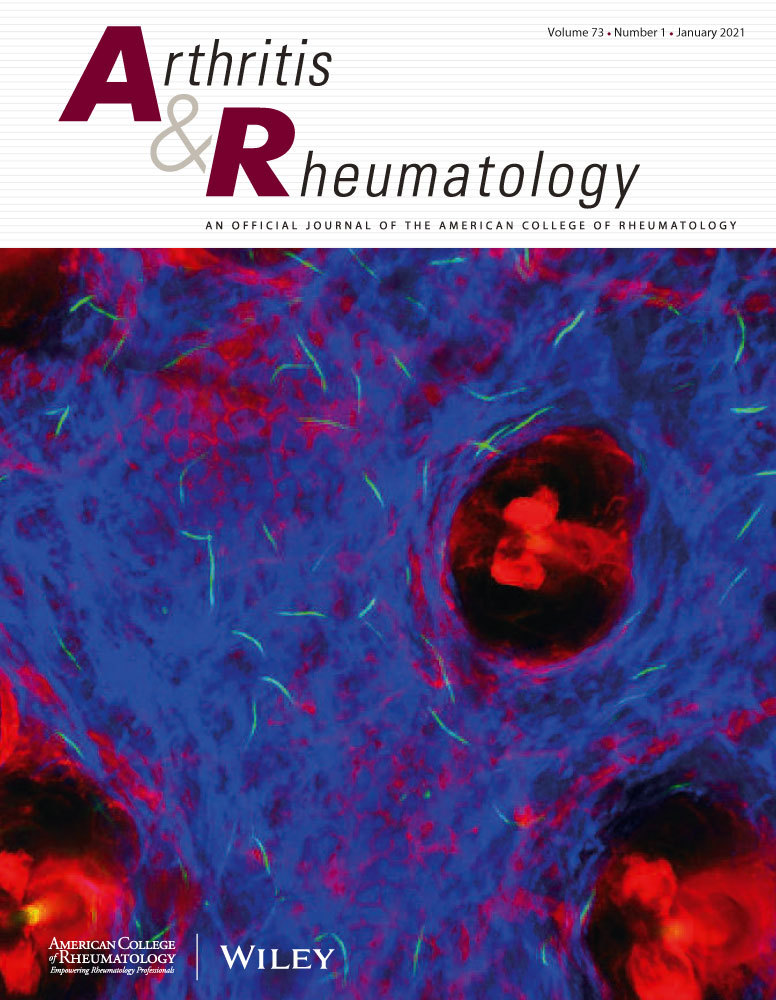Sirt5 regulates chondrocyte metabolism and osteoarthritis development through protein lysine malonylation
IF 11.4
1区 医学
Q1 RHEUMATOLOGY
引用次数: 0
Abstract
ObjectivesChondrocyte metabolic dysfunction plays an important role in osteoarthritis (OA) development during aging and obesity. Protein post‐translational modifications (PTMs) have recently emerged as an important regulator of cellular metabolism. We aim to study one type of PTM, lysine malonylation (MaK) and its regulator Sirt5 in OA development.MethodsHuman and mouse cartilage tissues were used to measure SIRT5 and MaK levels. Both systemic and cartilage‐specific conditional knockout mouse models were subject to high‐fat diet (HFD) treatment to induce obesity and OA. Proteomics analysis was performed in求助全文
约1分钟内获得全文
求助全文
来源期刊

Arthritis & Rheumatology
RHEUMATOLOGY-
CiteScore
20.90
自引率
3.00%
发文量
371
期刊介绍:
Arthritis & Rheumatology is the official journal of the American College of Rheumatology and focuses on the natural history, pathophysiology, treatment, and outcome of rheumatic diseases. It is a peer-reviewed publication that aims to provide the highest quality basic and clinical research in this field. The journal covers a wide range of investigative areas and also includes review articles, editorials, and educational material for researchers and clinicians. Being recognized as a leading research journal in rheumatology, Arthritis & Rheumatology serves the global community of rheumatology investigators and clinicians.
 求助内容:
求助内容: 应助结果提醒方式:
应助结果提醒方式:


